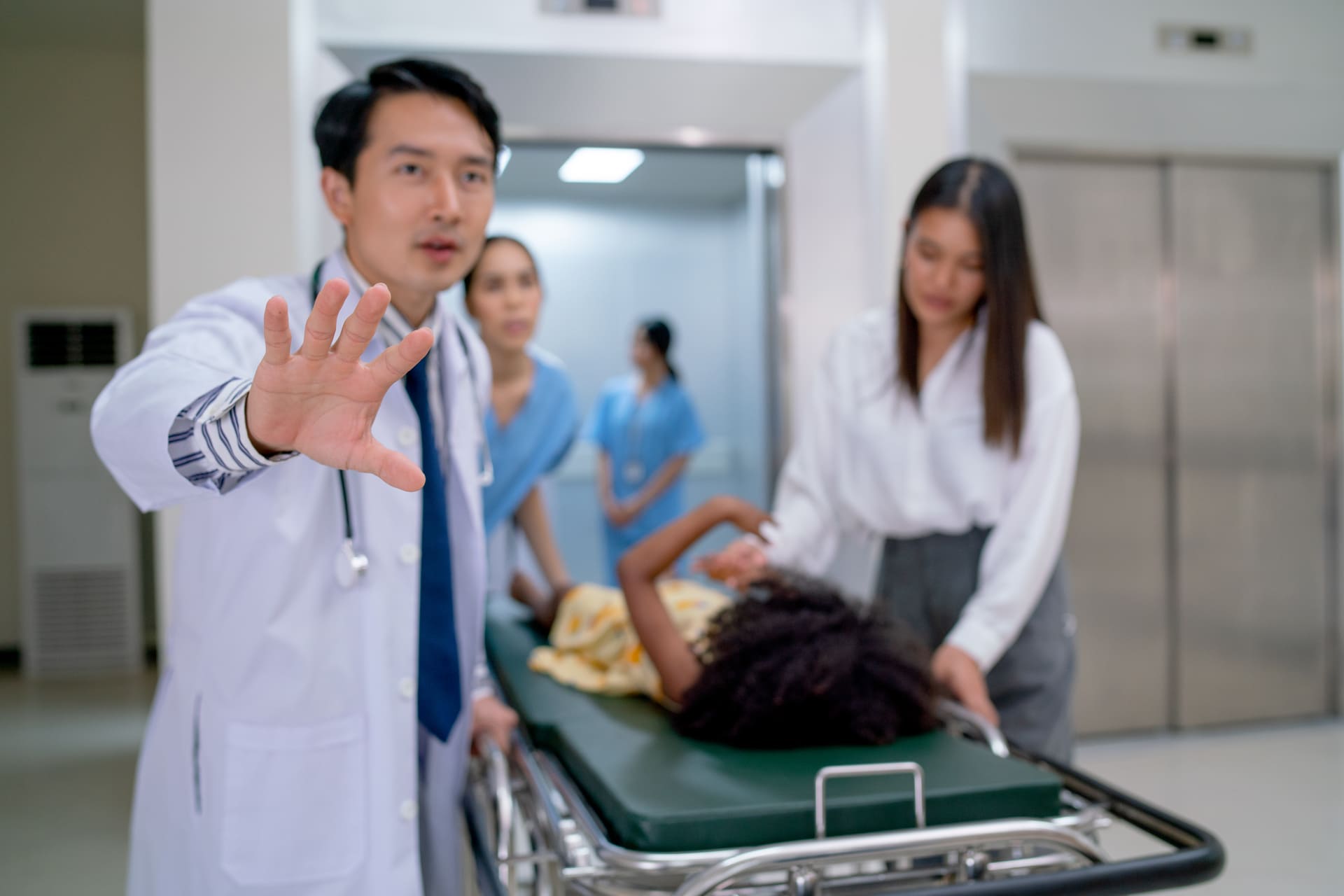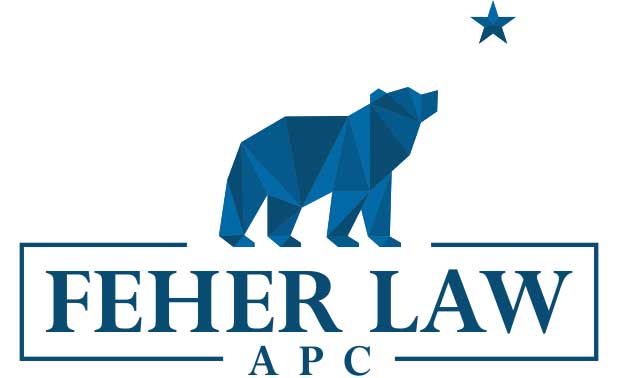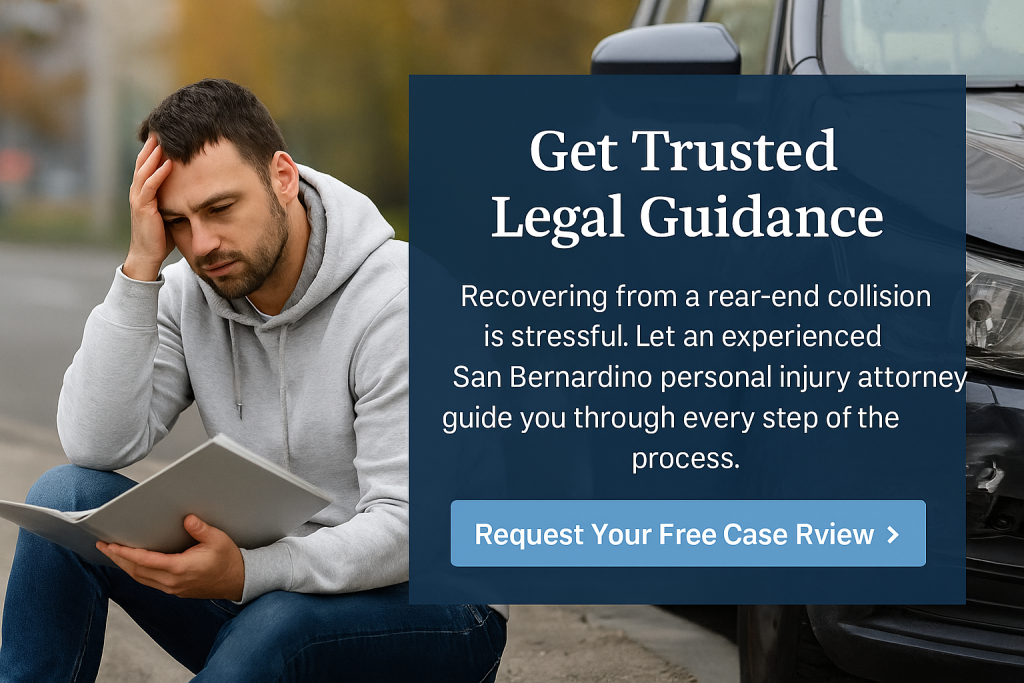Who is at Fault in a Rear-End Collision in California?
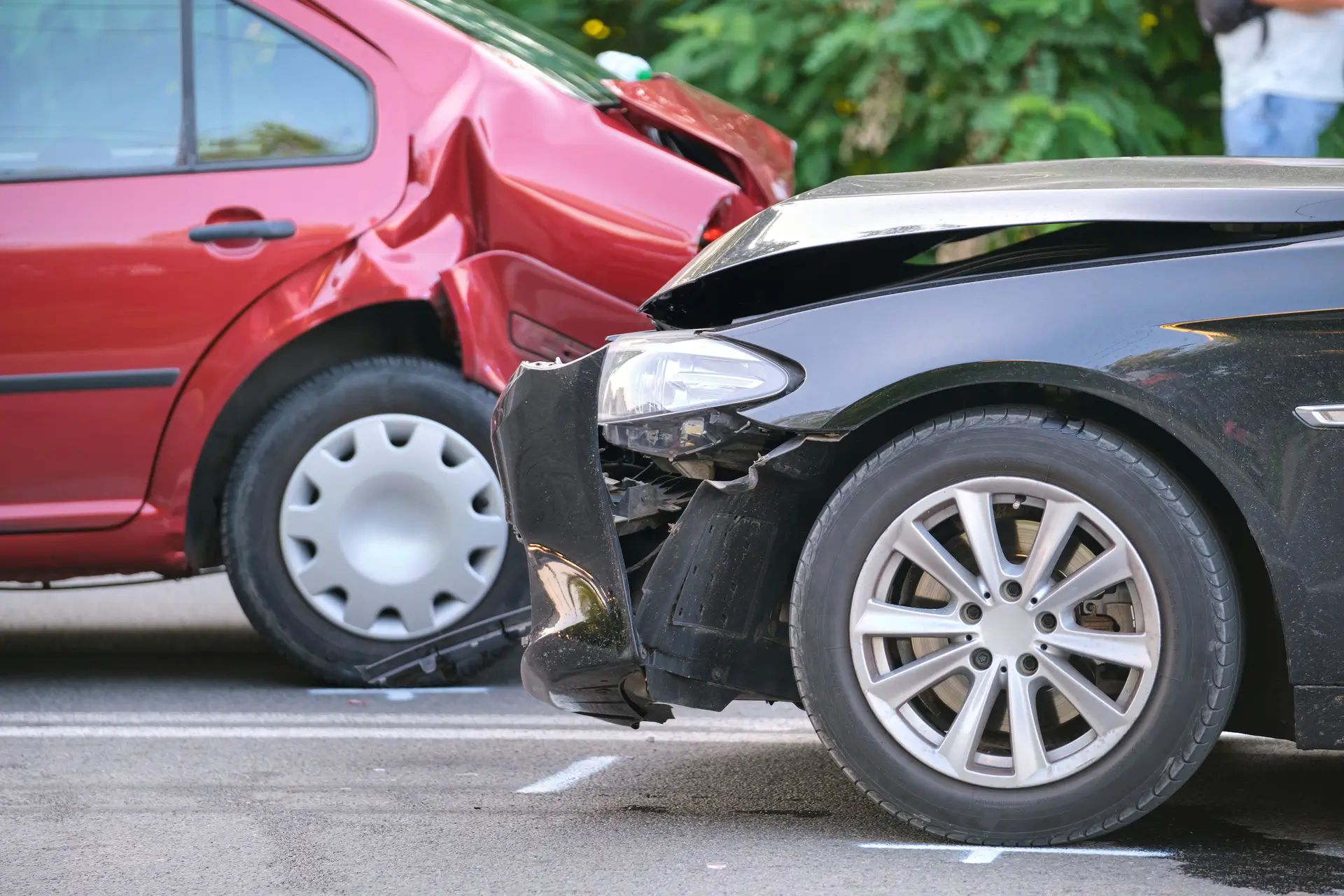
In most rear-end accidents, the trailing driver is generally considered at fault because California law requires drivers to maintain a safe following distance and remain in control of their vehicle. However, determining fault in a rear-end collision isn’t always straightforward. Liability can shift if the lead driver acted negligently—for example, by brake-checking, making sudden stops without warning, or driving with faulty brake lights. At Feher Law, we know that strong evidence like dashcam footage, police reports, and witness testimony is often the key to proving what really happened.
If you’ve been rear-ended or involved in a rear-end crash, don’t wait to protect your rights.
Call our experienced California car accident lawyer team today at (866) 646-6676 for a free consultation and the dedicated support you deserve.
Why the Rear Driver Is Usually at Fault
In most rear-end crashes, the driver in the back is presumed responsible. California law expects motorists to stay alert, maintain control, and leave enough space to react safely to changing traffic. When those duties aren’t met, accidents happen. Let’s break down the most common reasons the trailing driver is usually blamed in a rear-end collision.
Failure to Maintain a Safe Following Distance
One of the primary rules of the road is keeping enough distance between your car and the vehicle in front. When a driver tailgates or follows too closely, they reduce their ability to stop in time. Even a sudden but reasonable stop by the lead driver can result in a crash if the rear driver left too little space.
- California’s traffic laws emphasize that safe spacing is not optional—it’s a legal responsibility.
- Road conditions such as rain, fog, or heavy traffic require leaving more space, not less.
If the rear driver ignores these rules and causes a rear-end auto accident, liability usually falls squarely on them. This is why insurance companies and courts often presume the trailing driver is at fault unless there’s clear evidence showing otherwise.
Distracted or Reckless Driving
Another common factor in rear-end accidents is distraction. Drivers who take their eyes off the road—even for a few seconds—may not notice brake lights or slowing traffic until it’s too late.
- Distractions include texting, adjusting the GPS, eating, or even talking to passengers.
- Speeding or failing to pay attention to road conditions also reduces reaction time, increasing the likelihood of a crash.
Impaired Driving
Rear drivers are also more likely to be found at fault if impairment played a role. Alcohol, drugs, or even fatigue can dramatically slow reaction times and impair judgment.
- A drowsy or intoxicated driver may not recognize that traffic ahead is slowing until it’s too late.
- Impaired driving not only increases liability in a civil case but can also result in criminal penalties, making the consequences much more severe.
When the Lead Driver Might Be at Fault
Although rear drivers are often presumed responsible, liability can shift if the lead driver acted negligently. Common examples include:
- Sudden stops or brake-checking: Slamming on the brakes without cause, or intentionally brake-checking, can make the front driver partially or fully at fault.
- Unsafe driving maneuvers: Cutting into a lane too closely, stopping in traffic without hazard lights, or making sudden, unannounced moves can shift responsibility.
- Faulty brake lights: If the lead vehicle’s brake lights don’t work, the trailing driver may not have enough warning to stop, placing fault on the lead driver.
How Fault Is Determined
Determining fault after a rear-end accident in California involves more than just assuming the rear driver is responsible. Insurance companies, attorneys, and courts look at several key factors to decide liability.
- Evidence and Documentation: Dashcam footage, photos, police reports, and witness statements are often the most reliable proof of what happened.
- Circumstances of the Accident: Investigators consider traffic conditions, weather, vehicle speed, and whether either driver acted negligently.
- Comparative Negligence Rules: California follows pure comparative negligence, meaning both drivers can share responsibility. For example, if one driver is 70% at fault and the other 30%, compensation is reduced accordingly.
- Professional Evaluation: Attorneys can help interpret evidence, challenge assumptions, and build a strong case for fair compensation.
| Factor | Why It Matters | Example |
|---|---|---|
| Dashcam or Video Evidence | Provides an objective account of what happened | Footage shows the lead driver brake-checking unexpectedly |
| Police Report | Officer’s observations and fault assessment carry weight in claims and lawsuits | Report notes rear driver was distracted by a cell phone |
| Witness Statements | Neutral third-party accounts help support or challenge each driver’s story | Bystander confirms lead car stopped suddenly without signaling |
| Vehicle Damage Analysis | The location and extent of damage can indicate speed, impact, and sequence | Crumpled front bumper on trailing car but no brake marks on the roadway |
| Comparative Negligence | Allows fault to be divided between both drivers | Rear driver 80% responsible, lead driver 20% responsible |
Who is at fault in a 3-car rear-end collision in California?
In a 3-car rear-end collision in California, the rear driver is often found at fault for the initial impact, but the fault may be shared among drivers depending on the circumstances, such as speed, braking, and whether any distracted driving contributed to the crash.
Additional reading: 3-car rear-end collision settlements
If you’ve been rear-ended in Cali, seek our legal advice!
If you’ve been rear-ended in California, seeking experienced legal advice will protect your rights and secure the compensation you deserve. Our firm has a proven track record in rear-end accident cases, including notable results like:
- $4,200,000 verdict in Barboza vs. Global Paratransit for an auto crash resulting in a back injury in Long Beach.
- $4,000,000 settlement for an auto crash causing PTSD and a concussion in Los Angeles.
- $2,500,000 verdict in Stewart Family vs. Orange County Sheriff Dept. for an auto crash resulting in back and emotional injuries in Orange County.
Contact a California car accident lawyer today for a free consultation, and let our experienced team fight for the compensation you deserve.

Wondering What Your Car Accident Case Could Be Worth?
Our car accident settlement calculator helps you estimate potential compensation by inputting your medical expenses, property damage, lost income, and pain and suffering multiplier. Simply enter your specific damages and receive an instant projection of your claim’s potential value.
Disclaimer: The results generated by this car accident settlement calculator are for informational purposes only. They are not legal advice or a substitute for professional evaluation. This tool offers a general estimate and does not reflect the unique details of your case, such as specific laws, liability factors, or additional specifics.
Selected Value: 0%
Understanding liability in rear-ended crashes
Understanding who’s responsible in a rear-end crash is important for determining who pays for damages and injuries. With this in mind, let’s break down how liability works and what factors can change who’s to blame:
- Presumption of Fault: Usually, if you hit someone from behind, people assume you’re at fault. This is because drivers are supposed to keep a safe distance to avoid accidents. But this isn’t always set in stone—sometimes, the situation isn’t so clear-cut.
- Rebuttable Presumption comes in when the rear driver isn’t entirely to blame and fault needs to be challenged. For example, if the front car’s brake lights weren’t working, or if the front driver slammed on the brakes without warning, the rear driver might not be fully at fault. If the front driver was driving recklessly, the blame could shift, at least partially.
As you would expect, determining fault can be a complex process, which is why legal involvement is key for a potential claim. Let’s explore some of the key elements that play a role in determining fault:
Comparative negligence
In California, determining fault isn’t as simple as pointing to one driver. The state follows the rule of pure comparative negligence, which means that more than one party can be at fault for an accident.
If both drivers are found to have contributed to the crash, the fault is divided between them. This division of fault directly impacts the amount of compensation each party can recover.
For example, if you’re found to be 20% at fault for an accident, and your total damages amount to $100,000, your compensation would be reduced by your percentage of fault. So in this case, you would receive $80,000 instead of the full amount.
Evidence and documentation
When it comes to proving fault, the evidence you gather can make or break your case. After an accident, it’s important to collect as much information as possible to support your claim.
Dashcam footage can be particularly valuable, as it provides an unbiased record of the events leading up to the crash. This visual evidence can clearly show who was at fault, whether it’s a case of sudden braking, speeding, or reckless driving.
Witness statements are another critical piece of evidence. Independent witnesses can provide a neutral perspective on what happened, which can be especially useful if the other driver disputes your version of events.
Additionally, police reports often include the officer’s assessment of fault, which can carry significant weight in insurance claims and legal proceedings.
Generally speaking, the more comprehensive your documentation, the stronger your case will be when it comes to determining who’s at fault.
Gathering evidence after being in a rear-end accident in California can be difficult. You can rely on a Torrance car accident lawyer from our law firm to remove this burden from you

Common scenarios and legal considerations when getting rear-ended
In our experience, the below are classic examples of fault in a rear-end accident in California and their exceptions:
Sudden stops and brake-checking
One of the most frequent causes of rear-end collisions is sudden stops. While the rear driver is often presumed to be at fault, there are exceptions. Here are some examples:
- Lead driver slams on the brakes without a valid reason: This sudden, unexpected stop can catch the rear driver off guard, potentially making the lead driver partially or fully at fault.
- Brake-checking: A dangerous behavior where the lead driver intentionally stops suddenly to “teach a lesson” to the driver behind. This can shift liability to the lead driver if it causes a collision.
- Erratic driving behavior by the lead driver: If the lead driver’s actions are deemed unsafe, such as frequent, unpredictable braking, they may be found negligent for causing the accident.
Multi-car collisions
Rear-end accidents involving multiple vehicles are particularly complex when it comes to determining fault. In a chain-reaction crash, the driver who initially caused the accident may be primarily responsible.
However, each subsequent collision must be analyzed separately to assess whether the following drivers were maintaining a safe distance and paying attention to the road.
For example, if Driver A rear-ends Driver B, pushing them into Driver C, Driver A may be held liable for the entire sequence, but if Driver B was following too closely to Driver C, they might also share some of the blame.
Exceptions to general rules
While the rear driver is often at fault, there are exceptions to this general rule:
- If the car in front stopped in the middle of the road without proper signals or hazard lights, the lead driver might be considered negligent.
- Similarly, sudden lane changes by the lead driver without signaling or leaving enough space can make them responsible for a rear-end collision.
- In these scenarios, the rear driver may not be fully at fault, and the specifics of the incident will be critical in determining liability.
Legal advice and steps to take post-collision
After a rear-end collision, it’s important to know your legal options and take the right steps to protect yourself. Being prepared can make a big difference in how things turn out.
Seeking legal counsel
Dealing with everything after a California car accident can be really stressful, especially when you’re determining who is at fault and your rights. Consulting with a personal injury lawyer is essential to ensure that you receive the compensation you deserve.
An experienced San Bernardino car accident lawyer can guide you through California law, help gather necessary evidence, and advocate on your behalf, making sure that all aspects of your case are handled professionally and efficiently.

What to do if I get rear-ended?
If you’ve been rear-ended, taking the right steps immediately after the collision is vital for your safety and for building a strong case.
Here’s what you should do:
- Ensure Safety: Move to a safe location if possible, away from traffic. Turn on your hazard lights to alert other drivers.
- Check for injuries: Assess yourself and your passengers for any injuries. If anyone is hurt, call 911 immediately to get medical help.
- Call the police: Even if the accident seems minor, it’s important to have a police report if they didn’t attend the scene. This official documentation will be vital for your insurance claim and any legal proceedings.
- Gather information: Exchange contact and insurance details with the other driver. Also, collect the names and contact information of any witnesses.
- Document the scene: Take photos of the accident scene, vehicle damage, skid marks, and any other relevant details. This visual evidence can be pivotal in determining fault.
- Seek medical attention: Even if you don’t feel injured, it’s wise to see a doctor. Some injuries, like whiplash, may not be immediately apparent.
- Notify your insurance company: Report the accident to your insurer as soon as possible, providing them with the necessary details and documentation.
- Consult a lawyer: Before making any statements or accepting a settlement offer, speak with an experienced personal injury attorney from our firm. We can help ensure that your rights are protected and that you receive fair compensation for your injuries and damages.
Common injuries and compensations
In California, the at-fault insurance system means that the driver who caused the accident has to cover the damages, which can include things like medical bills, lost wages, and more.
Here are some common injuries from rear-end collisions and the different types of compensation you can receive for them:
Common injuries
- Whiplash: The sudden jolt from a rear-end crash can cause your neck to snap forward and back, leading to whiplash. This painful injury can result in neck stiffness, headaches, and even chronic pain.
- Back injuries: The impact of a rear-end collision often affects the spine, leading to herniated discs, sprains, and strains. These injuries can cause long-term pain and mobility issues.
- Head injuries: Even with airbags, rear-end collisions can lead to concussions or more severe traumatic brain injuries (TBI) if your head hits the steering wheel, window, or seat.
- Broken bones: The force of the crash can cause fractures, especially in the arms, wrists, and ribs, which may require surgery and long recovery times.
- Soft tissue injuries: These include damage to muscles, ligaments, and tendons, which can be painful and may limit your ability to work or perform daily activities.
Compensation
If you’re injured in a rear-end collision, you may be eligible for various types of compensation, including:
- Medical expenses: This covers hospital bills, doctor visits, physical therapy, medication, and any ongoing treatment needed for your injuries.
- Lost wages: If your injuries prevent you from working, you can seek compensation for the income you’ve lost during your recovery.
- Pain and suffering: Compensation for the physical pain and emotional distress caused by the accident.
- Property damage: Covers the repair or replacement of your vehicle and any other property damaged in the crash.
- Future medical costs: If your injuries require long-term care, you may be compensated for future medical expenses.
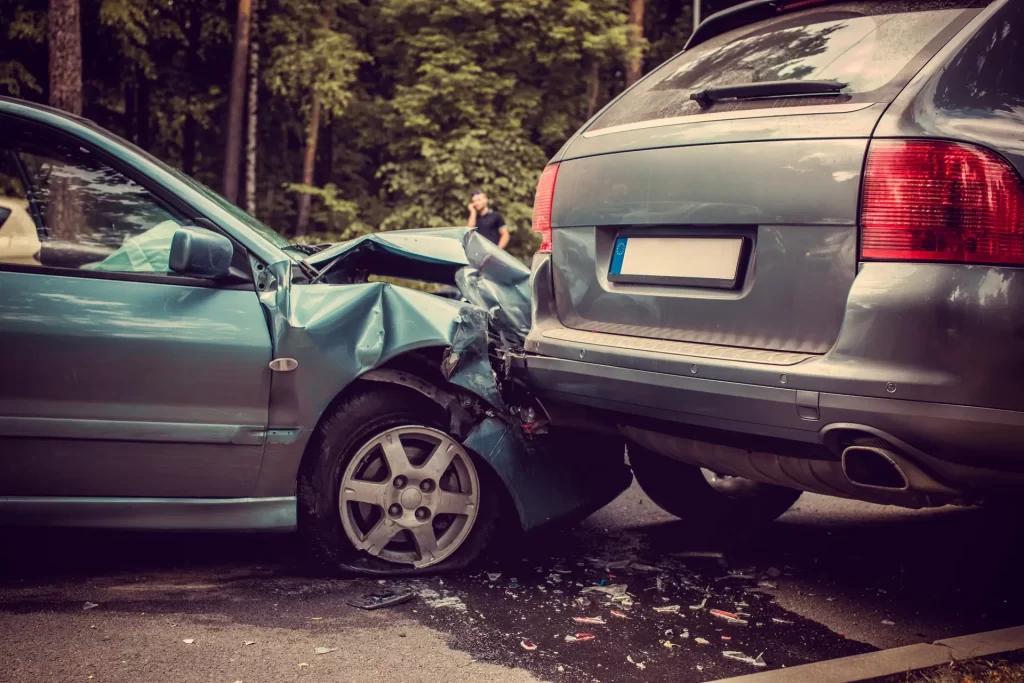
Statistical data on rear-end collisions
A rear-end accident is a frequent occurrence on California roads and can have serious consequences. Statistical data behind these accidents can shed light on their prevalence and impact.
Prevalence of rear-end collisions
Rear-end collisions are one of the most common types of car accidents in California. They often happen during heavy traffic or sudden stops and can involve varying degrees of severity.
According to recent statistics from the NHTSA, rear-end collisions are the most common type of crashes, making up 29% of all instances and a conflict with the lead vehicle being the predominant cause.
Impact and severity
Speeding increases the force of the impact, leading to more severe injuries and damages. In fact, over one-third (35.1%) of speeding-related fatal and severe injury crashes in California were rear-end collisions.
Several factors contribute to the high rate of rear-end collisions:
- Distracted driving: Drivers who are texting or not paying attention to the road are more likely to rear-end another vehicle.
- Tailgating: Following too closely increases the risk of a collision if the lead vehicle suddenly stops.
- Poor weather conditions: Rain, fog, and other weather conditions can reduce visibility and road traction, making rear-end collisions more likely.
Consulting with a Huntington Beach car accident lawyer can help clarify liability and advise on your California rear-end case further

Some of our rear-end testimonials
Here’s a look at some testimonials from our clients who experienced the challenges and resolutions involved in these types of accidents.
Freeway Rear-End Collision
“Feher Law took my case a few months ago. I was rear-ended on the freeway and right away Gizi at the firm took care of me and helped me get set up. Thank you everyone for helping me with medical treatment and getting my truck fixed. I highly recommend.”
– Armando Raygoza
Feher Law’s quick and thorough response helped the client get the medical treatment and vehicle repairs they needed. This shows just how important it is to have prompt legal help after a rear-end collision.
Severe Car Accident and Recovery
“After getting rear-ended in a really bad car accident, I was referred to Feher Law. Tom and his team have paid full attention to the details of my case. They have represented me throughout the process of my injury, recovery, and total compensation. They update me on all my appointments, checking in on me to see how I’m feeling, and consistently showing their support and professionalism. Their top-notch representation always has my best interest in mind. Their great efforts and service give me peace of mind. I will refer this law firm to all my family and friends.”
– Eric Garcia
Our team at Feher Law was there every step of the way, making sure the client got fair compensation and regular updates. We take pride in offering personal support and handling each case with the care it needs.
Successful Compensation and Legal Support
“As a result of being rear-ended in a car accident, Thomas Feher, Esq., and Mansour Soltanmoradi, Esq., of Feher Law, APC, led a team of attorneys to pursue compensation for my injuries. Feher Law’s initial overview of my case not only helped me to better understand its strengths and complexity but provided assurance that my choice was an excellent one for a successful outcome.”
– Melvin Ross
With Feher Law managing the details and focusing on the client’s needs, the outcome was a successful compensation. Our attorneys worked hard to prepare for mediation and court, proving how important personalized legal support is for getting the best results in rear-end collision cases
Recent changes in legislation
Recent legislative changes in California reflect efforts to enhance road safety and address common issues in rear-end accidents.
Speed camera pilot program – AB 645
This new law, AB 645, establishes a five-year pilot program that allows local transportation authorities in San Jose, Oakland, Los Angeles, Glendale, Long Beach, and San Francisco to install speed cameras on local streets where safety concerns exist.
These cameras will automatically photograph speeding vehicles and send a notice of violation to the registered owner by mail. This initiative aims to reduce speeding, traffic collisions, and related injuries and fatalities.
Improved visibility at crosswalks and intersections – AB 413
AB 413 prohibits parking within 20 feet of the approach side of any marked or unmarked crosswalk, and within 15 feet of crosswalks with curb extensions. This law is designed to enhance visibility at crosswalks and intersections by keeping the area clear of parked vehicles, a safety measure called “daylighting.”
Local governments are allowed to designate specific areas for bicycle or motorized scooter parking near crosswalks to maintain safety while accommodating these modes of transportation. The goal is to improve visibility for all road users and help prevent accidents.
Impact on Liability
These legislative changes can influence how fault is determined in rear-end collisions:
- Stricter enforcement: With tougher laws against distracted driving and speeding, drivers who violate these regulations may face increased liability in accidents. If a rear-end collision results from a driver’s distraction or speeding, the legal consequences for the at-fault driver could be more severe.
- Insurance implications: Insurance companies may adjust their policies and practices in response to these new laws. For example, premiums may increase for drivers with distracted driving violations, or discounts may be offered for vehicles equipped with new safety technologies.
- Legal claims: The updated regulations can affect legal claims and settlements. Violations of these new laws in a rear-end collision could strengthen the injured party’s case, potentially leading to more favorable compensation outcomes.
Key takeaways
- The rear driver is usually presumed at fault in a rear-end collision, but not always.
- Lead driver negligence—like sudden stops or faulty brake lights—can shift liability and change how fault in a rear-end crash is assigned.
- California’s pure comparative negligence system allows fault to be shared between drivers.
- Strong evidence, such as dashcam footage, police reports, and witnesses, is critical to proving fault.
- Working with an experienced car accident attorney can help protect your rights and maximize compensation.
Contact an Experienced Lawyer Today
If you’ve been injured in a rear-end collision or any type of auto accident, getting the right legal support can make all the difference. At Feher Law, our experienced California car accident lawyers know how to gather evidence, protect your rights, and fight for the compensation you deserve.
Don’t navigate the claims process alone—call Feher Law today at (866) 646-6676 for a free consultation and trusted guidance on your case.

FAQs
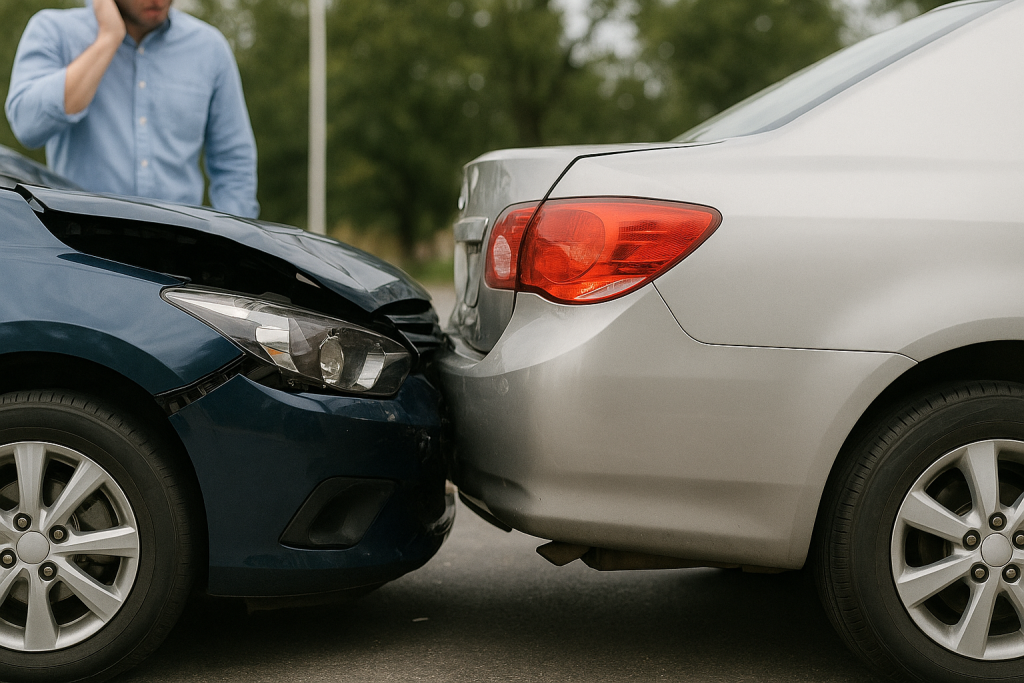
What types of damages can I recover in a rear-end collision lawsuit?
In a rear-end collision lawsuit, you can recover damages for medical expenses, lost wages, pain and suffering, and property damage. If the injuries are severe, compensation may also cover long-term care, rehabilitation costs, and any loss of earning capacity, ensuring comprehensive support for your recovery and financial well-being.
How long do I have to file a claim after a rear-end collision in California?
In California, you generally have two years from the date of the accident to file a personal injury claim. However, if the claim involves government entities, the deadline is six months. It’s best to consult a lawyer soon after the collision to ensure timely filing.
What is the average payout for a rear-end collision in California?
The average payout for a rear-end collision in California is $44,975 but can vary widely, depending on factors like injury severity and damage. Generally, settlements range from a few thousand dollars to several hundred thousand. Serious cases involving significant injuries can see payouts in the millions of dollars.
How can you avoid being rear-ended in California?
To avoid being rear-ended in California, maintain a safe following distance, use turn signals well in advance, and avoid sudden stops. Stay alert and avoid distractions such as mobile phones. Regularly check your mirrors, be aware of your surroundings, and anticipate potential hazards to help prevent rear-end collisions effectively.
I rear-ended someone who stopped suddenly in California—am I automatically at fault?
Not necessarily. While rear drivers are often presumed responsible in California, fault can shift if the lead driver acted negligently—for example, by stopping suddenly without cause, brake-checking, or driving with faulty brake lights. In these cases, liability may be shared under California’s comparative negligence rule. Gathering evidence such as dashcam footage, police reports, and witness statements is critical to proving your side of the story.
I rear-ended someone and they didn’t call the police—what should I do?
Even if the other driver doesn’t call the police after a rear-end accident, you should still take steps to protect yourself. Document the scene with photos, gather witness information, and exchange insurance details with the other driver. California law doesn’t always require police at minor accidents, but having an official report can help with insurance claims and potential disputes over fault. If no police report exists, your own evidence becomes even more important in establishing what happened.
Related Posts
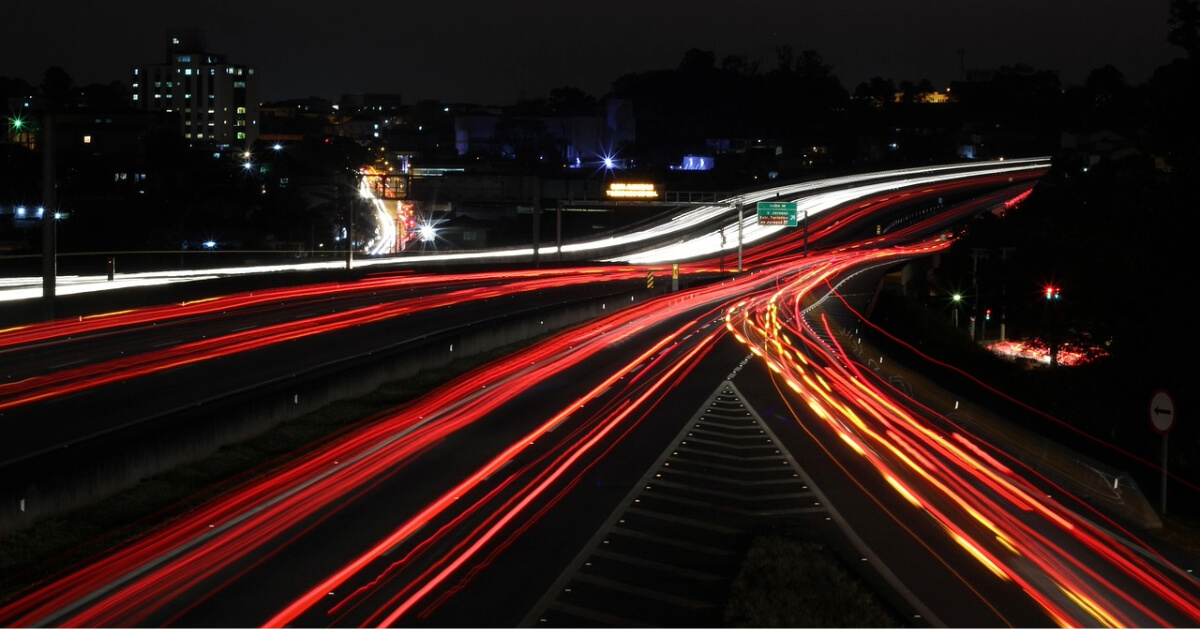
Person killed in Boyle Heights crash on I-10
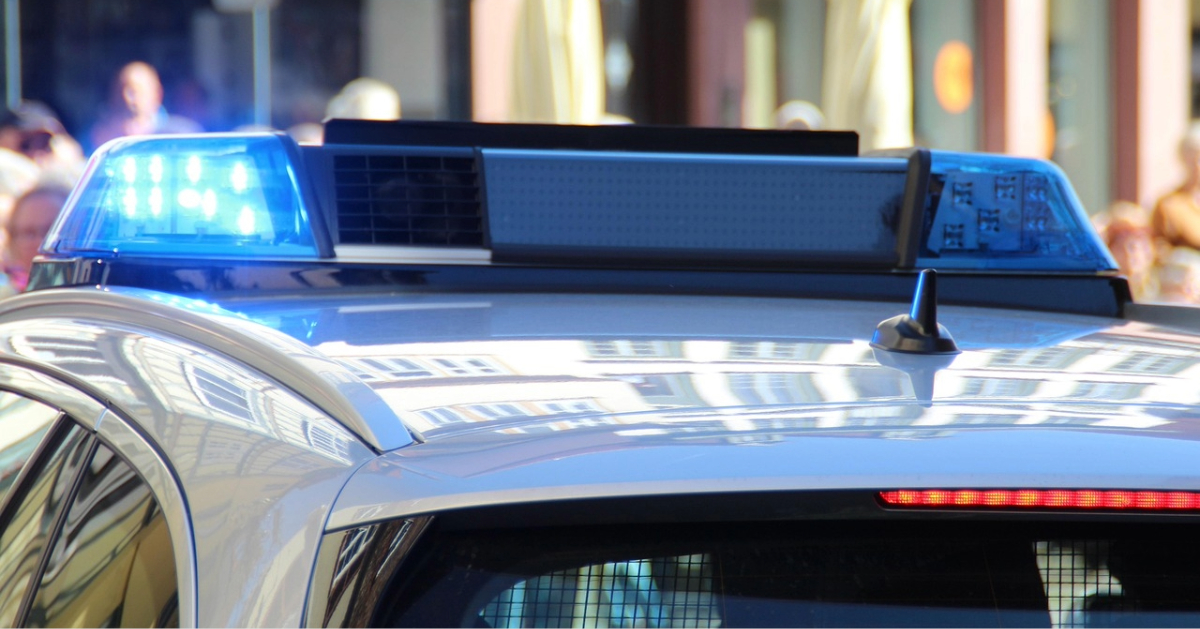
Woman killed in Palmdale hit-and-run crash identified

Pedestrian killed near Compton on East 139th St

Personal Injury Lawyer Cost in California
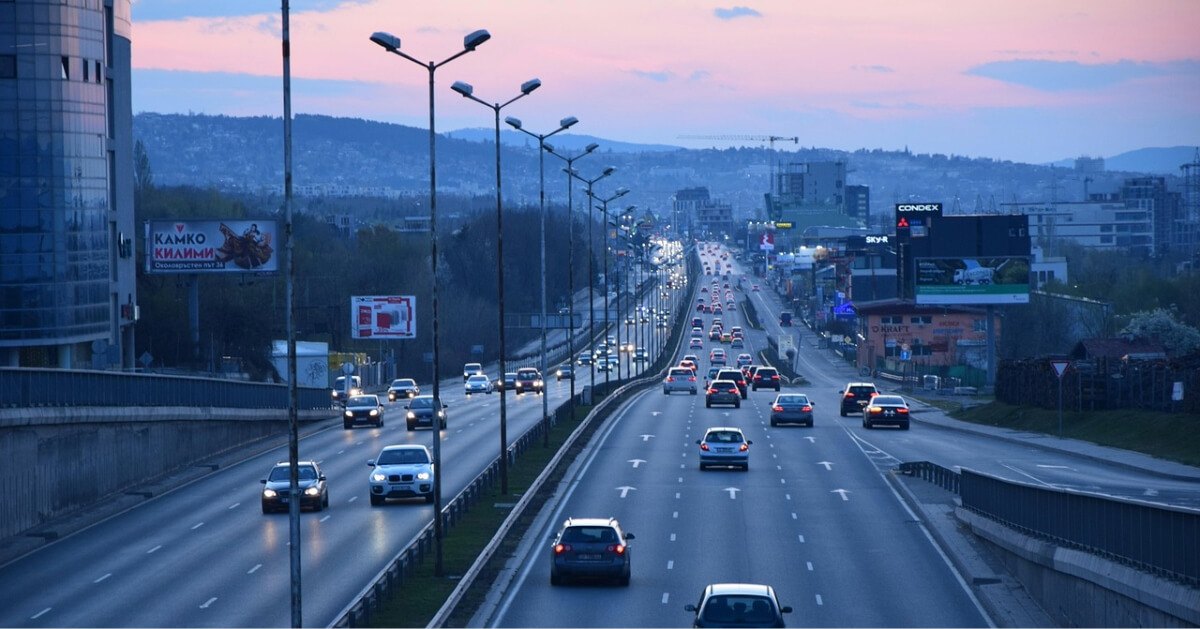
PALMDALE, CA — Driver Arrested After Head-On Crash Kills One
